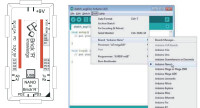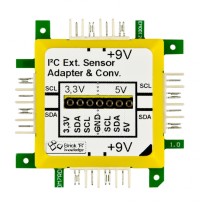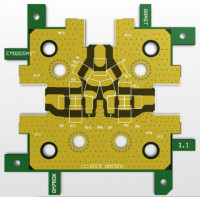Review: Brick‘R‘knowledge – Learn everything from Ω to GHz
That’s debatable…

When the Arduino gets in the mix

Appropriate Arduino sketches are freely downloadable on the site, as well as manuals in German and English. Many examples are included, as well as videos.
There are 4 other series of blocks, recently introduced, especially for devotees of LEDs, lights and colours. Impossible to cover here, but suffice to say that we’ve come a long way from the modest beginner’s kit we were talking about at the start…and that’s not the end of the surprises!

And these biscuits, in the form of RF blocks and experimental cards (MHz and GHz), equipped in some cases , apart from the usual connectors, with types appropriate for their frequencies of operation (P-SMP, SMA, P-SMP). This characteristic of the Brick‘R‘knowledge collection is probably unique in the world, and will probably inspire some to work in the field!
QED
The view that Brick‘R‘knowledge opens on the world of embedded microcontroller, sensors, photovoltaics and RF – in short on modern electronics, places this system at to top, and gives it a guarantee of seriousness and reliability that inspires confidence for the future.Don’t be surprised that price has not yet been mentioned. It’s not an oversight, it simply just passed unnoticed. But it compares favourably with those other plastic bricks that the whole world knows. So good luck with your Christmas gift budget!
Read full article
Hide full article


Discussion (0 comments)